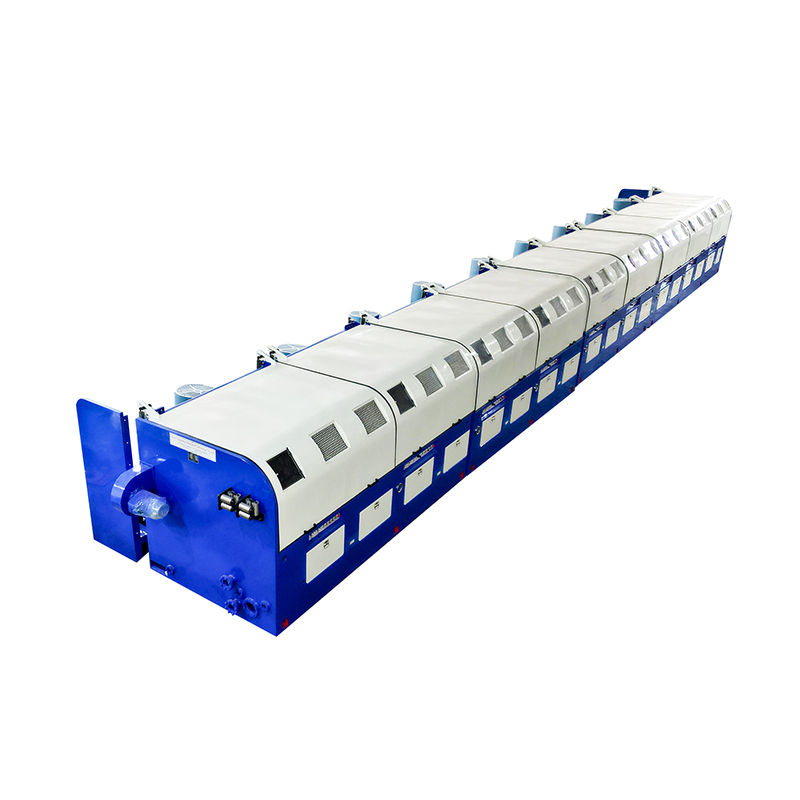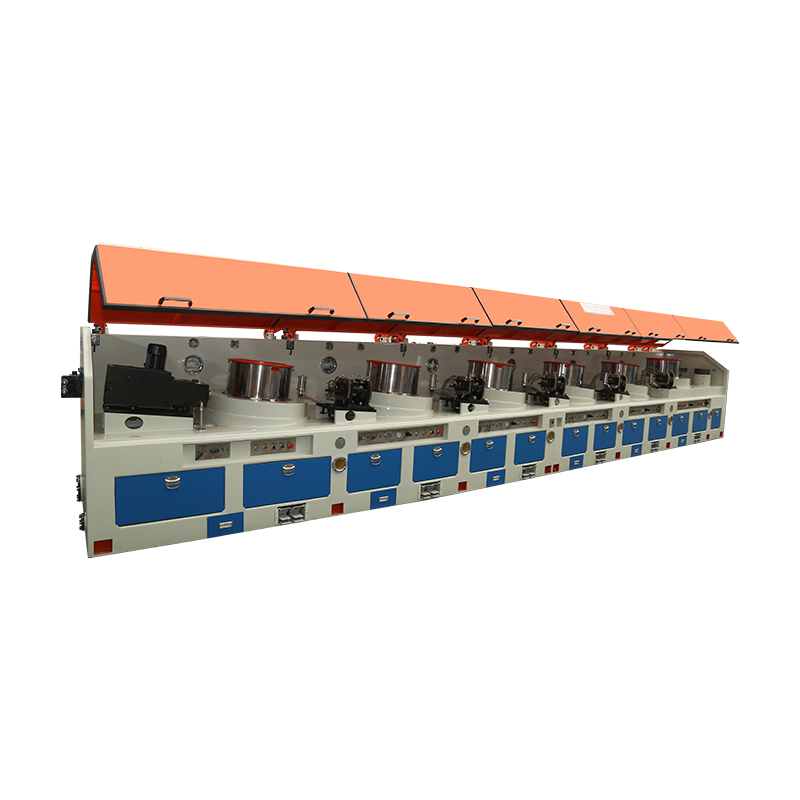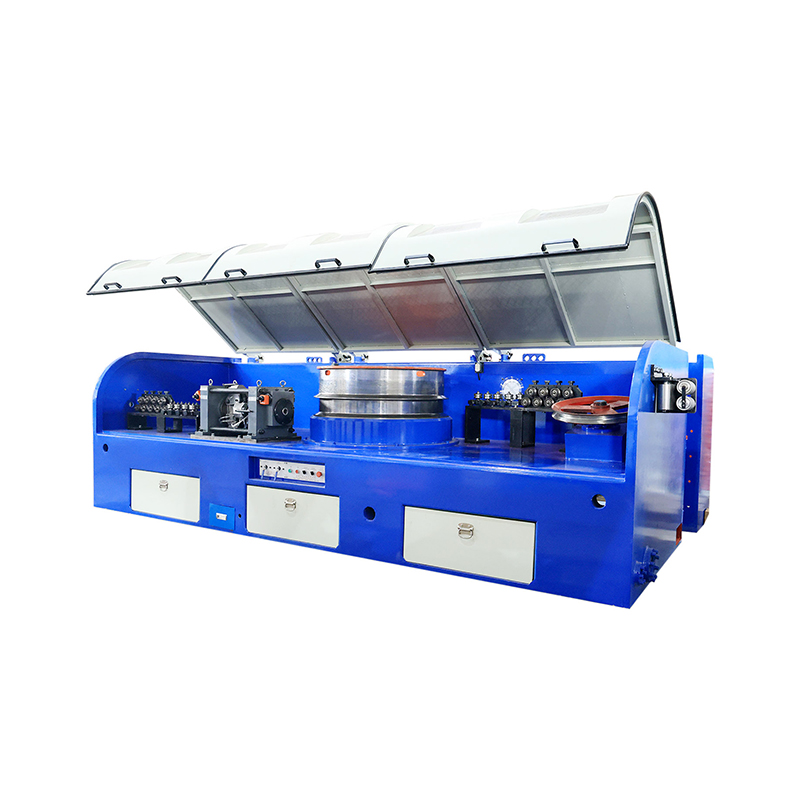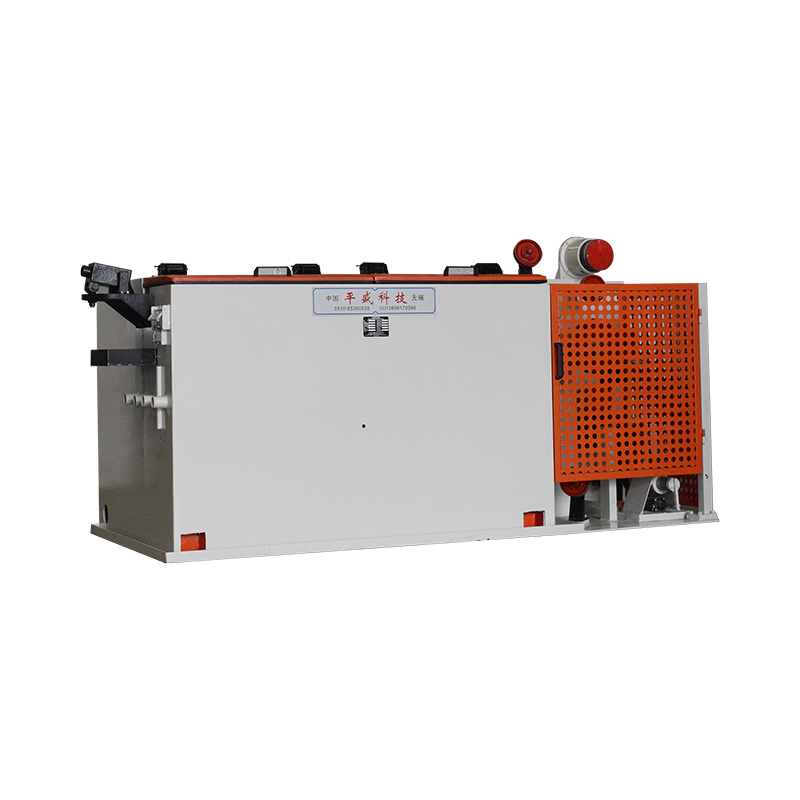What Are the Advantages of Using an Inverted Vertical Wire Drawing Machine Over Traditional Horizontal Machines?
Wire drawing is a critical process in the metalworking and cable manufacturing industries, transforming metal rods or bars into wires of precise diameters. Traditionally, horizontal wire drawing machines have been the standard for decades, but innovations in machinery design have introduced inverted vertical wire drawing machines, which are increasingly favored in modern production facilities. These machines not only improve production efficiency but also enhance wire quality, reduce energy consumption, and optimize operational safety.
1. Overview of Wire Drawing Machines
Wire drawing machines are used to reduce the diameter of metal rods or wires through a series of dies. The process involves pulling the metal through successively smaller dies to achieve the desired diameter while maintaining mechanical properties.
- Horizontal Wire Drawing Machines: Traditionally, these machines feature a horizontal configuration where wire spools, dies, and capstans are arranged in a linear, horizontal plane.
- Inverted Vertical Wire Drawing Machines: These machines invert the process orientation, with the wire moving vertically downward through the machine. The pay-off spool is located at the top, and the take-up system is at the bottom, creating a gravity-assisted drawing path.
The inverted vertical design introduces several technical and operational advantages, especially in large-scale, high-speed wire production.
2. Space Efficiency and Compact Layout
One of the most immediate advantages of inverted vertical wire drawing machines is space efficiency.
- Vertical Orientation: By using a vertical configuration, IVWDMs reduce the footprint of the machine on the factory floor. This is especially beneficial for facilities with limited space or for plants seeking to maximize production lines in a constrained area.
- Stacked Die Stations: Vertical machines allow multiple drawing dies to be arranged in a compact stacked manner, reducing the length of the production line and simplifying wire handling.
- Simplified Installation: The vertical setup often requires less auxiliary equipment and can integrate more easily with upstream and downstream processes, such as wire annealing, coating, or spooling.
In contrast, horizontal machines require long production lines to accommodate multiple dies and drawing stages, increasing floor space requirements and complicating factory layout.
3. Gravity-Assisted Drawing
Gravity plays a crucial role in the operation of inverted vertical wire drawing machines.
- Reduced Tension Requirements: The downward pull of the wire reduces the mechanical tension required from capstans or drawing motors. This can minimize wear on dies and drawing equipment.
- Consistent Wire Feed: Gravity helps maintain a steady wire feed, reducing slippage or jerky movements, which improves wire uniformity and surface quality.
- Energy Savings: The assisted downward movement lowers the energy demand of motors, resulting in reduced operational costs compared to horizontal machines, which must rely entirely on mechanical pulling.
This gravity-assisted advantage also contributes to enhanced die longevity, as less mechanical stress is exerted on both the wire and the dies during drawing.
4. Enhanced Wire Quality and Surface Finish
Maintaining wire quality is a top priority in wire production. Inverted vertical wire drawing machines improve wire quality and consistency in several ways:
- Reduced Wire Vibration: Vertical orientation stabilizes the wire path, reducing lateral vibration that can occur in horizontal machines.
- Uniform Die Pressure: Gravity-assisted drawing allows more uniform contact between the wire and die surfaces, ensuring consistent diameter and smooth surfaces.
- Improved Tolerances: IVWDMs provide tight control over dimensional tolerances, which is critical for precision applications such as electrical wires, steel cables, and high-strength alloys.
This advantage is particularly significant when producing thin or delicate wires, where slight irregularities can compromise performance in electrical, automotive, or aerospace applications.

5. Energy Efficiency
Energy efficiency is a growing concern in modern manufacturing. Inverted vertical wire drawing machines offer notable energy savings over traditional horizontal designs:
- Lower Motor Load: Gravity reduces the tension that must be generated by motors, decreasing electricity consumption.
- Reduced Friction Losses: The vertical path minimizes wire bending and directional changes, which reduces friction and energy loss.
- Fewer Auxiliary Systems: Vertical machines often require fewer mechanical components to maintain wire alignment, reducing the energy footprint of the entire system.
In large-scale production facilities, these efficiency gains can translate into substantial cost savings over time.
6. Improved Safety and Ergonomics
Safety and operator convenience are essential considerations in industrial operations. Inverted vertical wire drawing machines improve workplace safety and ergonomics:
- Lower Risk of Wire Snapback: The downward motion of the wire reduces the risk of wire snapping backward, a common hazard in horizontal machines.
- Easier Access for Maintenance: Vertical orientation allows operators to access dies and spools more safely, often from platforms or mezzanine levels, reducing the risk of accidents.
- Cleaner Workspace: Gravity-assisted downward drawing keeps wire debris and lubricants directed downward into collection trays, minimizing slips, spills, and exposure to hazards.
These ergonomic and safety improvements contribute to a more efficient and accident-free production environment.
7. Greater Flexibility in Wire Sizes and Materials
Inverted vertical wire drawing machines are well-suited for processing a wide range of metals and alloys, including:
- Copper and Aluminum Wires: Common in electrical cables and power transmission lines.
- Steel Wires: Used in construction, automotive, and mechanical springs.
- Specialty Alloys: Stainless steel, titanium, and other high-strength materials.
The vertical design allows for quick die changes and adjustable tension settings, enabling manufacturers to switch between wire sizes and materials more efficiently than in horizontal systems. This flexibility supports just-in-time manufacturing and customization for diverse customer requirements.
8. Reduced Maintenance and Longer Equipment Lifespan
Maintenance is a critical factor in production efficiency. IVWDMs offer several benefits in this regard:
- Lower Die Wear: Gravity-assisted tension reduces friction and mechanical stress, extending die life.
- Simplified Lubrication: Lubricants can be applied more consistently along the vertical path, improving wire surface quality and reducing die wear.
- Fewer Moving Parts: Vertical machines often have simpler mechanical layouts, reducing the number of components that require maintenance or replacement.
These factors contribute to lower maintenance costs, reduced downtime, and longer operational lifespan for the equipment.
9. Economic and Operational Benefits
The advantages of inverted vertical wire drawing machines translate into significant economic and operational benefits for manufacturers:
- Higher Productivity: Reduced downtime, faster wire drawing speeds, and improved material handling enhance overall throughput.
- Lower Operational Costs: Energy efficiency, reduced maintenance, and longer die life reduce overall production costs.
- Improved Product Quality: Consistent wire diameters and surface finishes minimize scrap and rework.
- Space Savings: Compact vertical layouts allow for additional production lines or storage, optimizing factory space.
These benefits make IVWDMs particularly attractive for large-scale wire manufacturers, including producers of electrical cables, automotive wires, and specialty industrial wires.
10. Conclusion
Inverted vertical wire drawing machines offer multiple advantages over traditional horizontal machines, including:
- Space efficiency due to vertical orientation and compact die arrangements.
- Gravity-assisted drawing, which reduces motor load and mechanical stress.
- Improved wire quality with smoother surfaces, uniform diameter, and reduced vibration.
- Energy efficiency, lowering operational costs in large-scale production.
- Enhanced safety and ergonomics, reducing workplace hazards.
- Greater flexibility for different wire sizes, materials, and production requirements.
- Reduced maintenance and longer equipment lifespan.
For modern wire manufacturing industries focused on high-speed, high-precision, and cost-effective production, the inverted vertical wire drawing machine represents a superior technological choice. Its combination of efficiency, reliability, and quality makes it an essential investment for companies seeking to remain competitive in the evolving global market.
By leveraging the advantages of IVWDMs, manufacturers can optimize production processes, reduce operational costs, and deliver high-quality wires that meet the stringent demands of electrical, automotive, construction, and industrial sectors.


 EN
EN
 English
English Español
Español Français
Français Português
Português عربى
عربى














